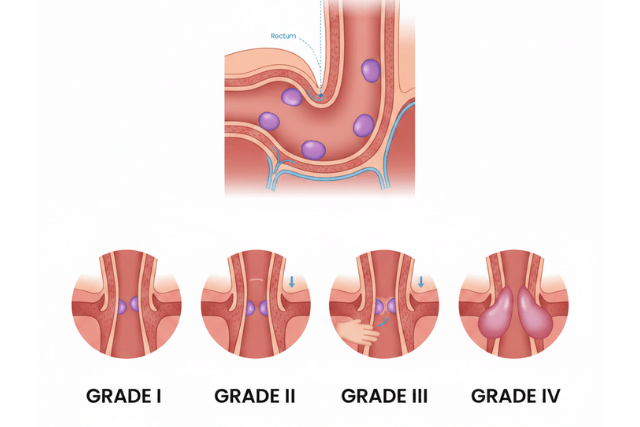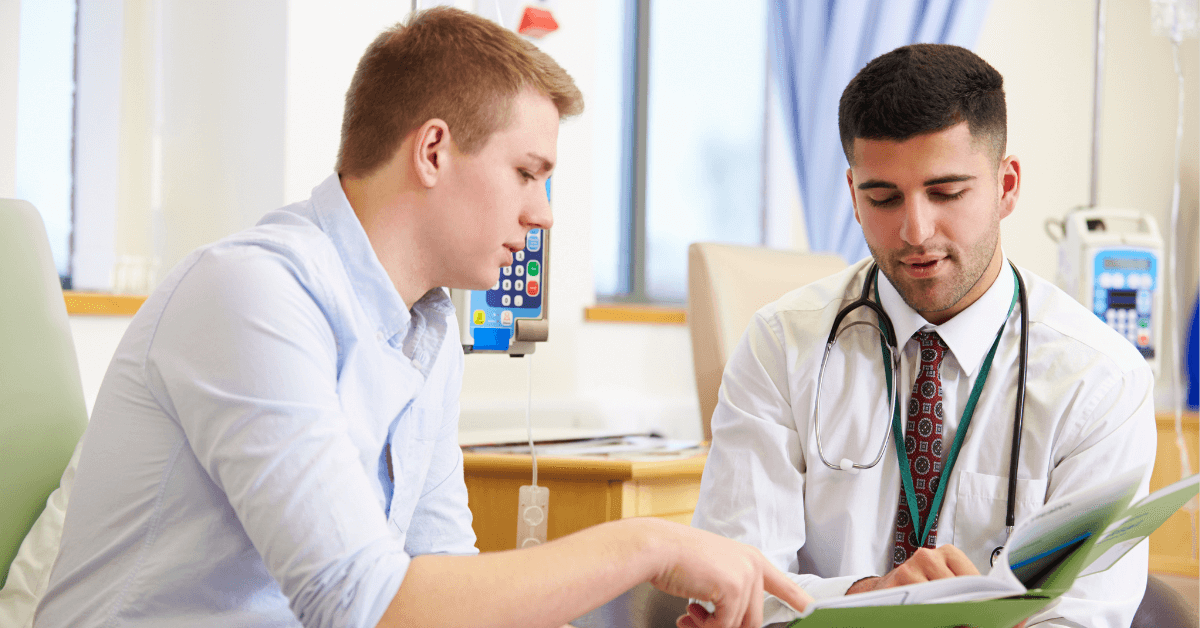Anal fistulas can cause significant discomfort, affecting one’s daily life and overall well-being. They often occur as a result of an infection in the anal glands, leading to the formation of a small tunnel between the skin and the anus. While recovery from an anal fistula can be challenging, it is possible with the right treatment, care, and understanding of what to expect.
This blog will explore the entire process of anal fistula recovery, including treatment options like FiLaC®, which is a laser therapy for anal fistulas. We will discuss practical tips for recovery, the stages of healing, what to expect after treatment, and how you can manage your recovery effectively.
What Is an Anal Fistula?
Before we dive into anal fistula recovery, it’s important to understand what an anal fistula is.
An anal fistula is a small tunnel or tract that forms between the inside of the anus and the surrounding skin. This condition often develops after an abscess, which is a painful, swollen cavity filled with pus, forms in the anus. If the abscess doesn’t heal properly, a fistula can develop.
Symptoms of an anal fistula include:
- Pain or discomfort around the anus, particularly while sitting.
- Swelling or redness near the anus.
- A persistent discharge of pus or blood.
- Itching or irritation around the anus.
Although anal fistulas can be bothersome, they are treatable. The key to managing this condition lies in the proper treatment and recovery process.
Treatment Options for Anal Fistulas
When it comes to anal fistula recovery, the first step is treatment. There are several treatment options available, ranging from traditional surgical approaches to advanced, minimally invasive methods like FiLaC® therapy.
1. Surgical Fistula Repair
Traditionally, the treatment for an anal fistula involved surgery. Surgery for an anal fistula is designed to eliminate the fistula and prevent it from reoccurring. Common types of surgeries for anal fistulas include:
- Fistulotomy: In this procedure, the surgeon opens the fistula tract and allows it to heal from the inside out.
- Seton Placement: A seton (a piece of surgical thread) is placed in the fistula to keep it open and drain the infection while it heals over time.
- Flap Surgery: A more complex approach for larger or more complicated fistulas, where the surgeon covers the opening with a flap of healthy tissue.
While surgical treatments can be effective, they are typically followed by a significant recovery period. Additionally, there is a risk of incontinence in some cases, particularly with larger fistulas.
2. FiLaC® Laser Therapy
A more advanced and less invasive treatment option is FiLaC® therapy. FiLaC® (Fistula Laser Closure) is a minimally invasive laser treatment designed to treat anal fistulas without the need for large incisions. The procedure involves inserting a laser fiber into the fistula tract to seal it, promoting faster healing with minimal damage to surrounding tissue.
FiLaC® therapy has several advantages:
- Minimally invasive: There are no large incisions, reducing recovery time and the risk of complications.
- Faster recovery: Patients typically experience a much shorter recovery time compared to traditional surgery.
- Fewer complications: Since the treatment does not involve cutting into the tissue extensively, the risk of incontinence is significantly lower.
- Reduced pain: The laser therapy is typically less painful than traditional surgical methods, with most patients reporting minimal discomfort.
What to Expect During Anal Fistula Recovery
After undergoing treatment for an anal fistula, the recovery process begins. Regardless of the treatment approach, it’s important to follow specific recovery guidelines to ensure successful healing.
1. Immediate Post-Treatment Care
The first few days following treatment are critical. Regardless of the method used, you will need to take steps to manage any discomfort and prevent complications.
- Pain Management: It is normal to experience some pain after the procedure, especially if you’ve had traditional surgery. Over-the-counter pain relievers, prescribed medications, or sitz baths can help manage the discomfort.
- Rest and Avoid Straining: Avoid activities that may put pressure on the area, such as heavy lifting or straining during bowel movements. It is recommended to rest during the first few days to allow the treated area to heal properly.
2. Diet and Hydration
Eating the right foods during anal fistula recovery is essential for healing. A high-fiber diet helps to soften stool, making bowel movements less painful. Drinking plenty of fluids, especially water, will help keep things moving and prevent constipation.
- High-fiber foods like fruits, vegetables, and whole grains are essential.
- Avoid spicy or irritating foods that may cause further irritation to the area.
Hydration is just as important. Drinking sufficient water helps to keep stool soft and makes recovery easier.
3. Hygiene and Wound Care
Proper hygiene is essential to prevent infection and promote healing during anal fistula recovery. After the procedure, you will likely need to clean the area gently after each bowel movement. Here are some hygiene tips:
- Use warm water for cleaning the area, avoiding harsh soaps or fragrances.
- Sitz baths: Soaking in a warm sitz bath can help soothe the area and reduce inflammation.
- Pat dry gently with a soft towel or allow the area to air dry.
If your surgeon prescribed any topical ointments or medications, be sure to apply them as instructed.
Tips for a Smooth Recovery
There are several practical tips that can help ensure a smoother and faster recovery after anal fistula treatment.
1. Follow Your Doctor’s Instructions
Following your doctor’s recovery instructions is crucial for the best outcome. Whether you’ve had FiLaC® therapy or traditional surgery, your healthcare provider will give you specific guidance on diet, activity restrictions, and wound care.
2. Avoid Sitting for Long Periods
Sitting for long periods can put pressure on the treated area and increase the likelihood of complications. If you must sit, use a cushion to take pressure off the area. You should also avoid prolonged sitting in general, especially during the early stages of recovery.
3. Regular Follow-Ups
Regular follow-up appointments with your doctor are necessary to monitor healing. These check-ups will help detect any early signs of infection or complications.
Potential Complications During Recovery
Though rare, complications can occur during anal fistula recovery. Some possible issues include:
- Infection: An infection can occur if the wound is not kept clean or if proper hygiene is not maintained.
- Bleeding: Some light bleeding can be expected, but heavy bleeding or persistent bleeding should be reported to a doctor immediately.
- Recurrent Fistula Formation: If the fistula isn’t completely sealed or if healing is incomplete, a recurrence may occur.
By following your doctor’s instructions and taking proper care of yourself during recovery, the chances of complications are significantly reduced.
How FiLaC® Laser Therapy Reduces Recurrence
One of the biggest challenges with anal fistulas is their tendency to return. However, FiLaC® therapy has shown a significant reduction in recurrence rates. By using laser technology to target and close the fistula tract, FiLaC® prevents new infections from developing and speeds up the healing process.
The advantages of FiLaC® in preventing recurrence include:
- Sealing the fistula tract: The laser permanently closes the tunnel, making it less likely for the fistula to return.
- Promoting tissue regeneration: The heat from the laser promotes the regeneration of healthy tissue, further reducing the likelihood of recurrence.
- Minimizing damage to surrounding tissues: The precision of the laser helps prevent unnecessary damage to healthy tissues, which can aid in faster recovery.
Conclusion: Managing Recovery for Long-Term Success
Recovering from an anal fistula can be a challenging journey, but with the right treatment, such as FiLaC® laser therapy, the recovery process can be significantly smoother. By following proper post-treatment care guidelines, maintaining good hygiene, and keeping regular follow-up appointments, you can reduce the risk of recurrence and promote long-term healing.
If you’re dealing with an anal fistula and looking for effective treatment options, FiLaC® therapy at IBI Clinic offers a minimally invasive solution that reduces recurrence and provides faster recovery. Contact us today to learn more about how FiLaC® can help you regain comfort and health.



